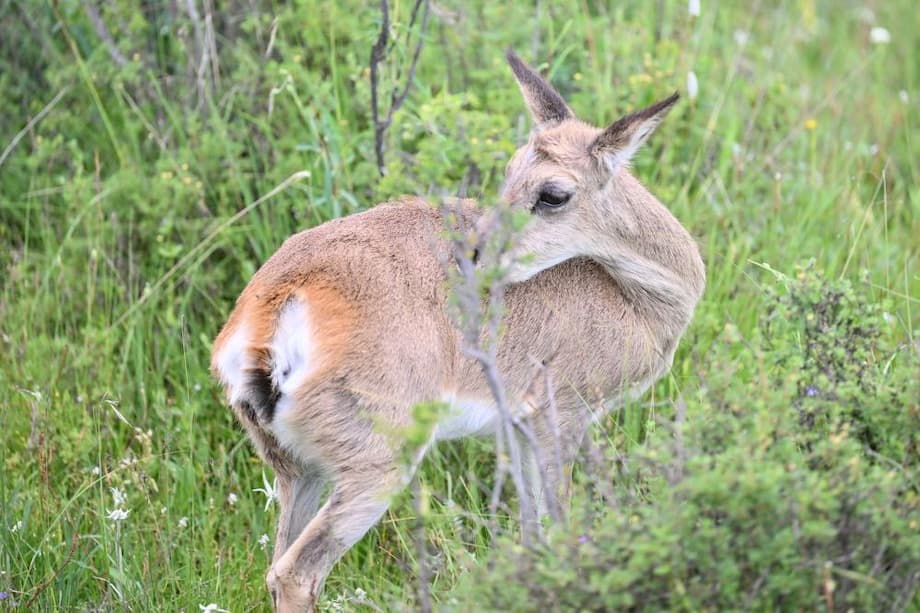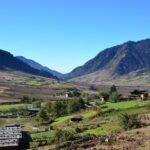A rare model for mountain wildlife care
High in the Qilian Mountains on the northeastern edge of the Qinghai Tibet Plateau, a modest complex tucked inside Qilian Mountain National Park has taken on one of conservation’s most difficult jobs. It stabilizes injured wildlife, rebuilds their health, and prepares them to go home. The Wildlife Rehabilitation and Breeding Station, which became fully operational in August 2022, is the only wildlife rescue facility inside a national park in China. Since opening, the team has treated more than 200 animals across 36 species, from apex predators like the snow leopard to elusive small cats and high plateau birds such as the black necked crane. The goal in every case is the same, to return animals to the wild with their instincts intact.
- A rare model for mountain wildlife care
- Who runs the station and how it works
- From triage to release, a phased approach
- Stories behind the numbers
- Facilities, constraints and the science of care
- A park, a shield and a biodiversity hotspot
- Community learning and growing empathy
- Beyond rescue, the conservation debate
- Key Points
Much of that work falls to Ma Cunxin, a zoologist who leads the station’s day to day operations. Mornings begin with carefully portioned diets for each species, a task that can take hours when an aviary of raptors and a kenneling area of small carnivores all need their own meals. Afternoons are for cleaning enclosures, disinfecting treatment rooms, and changing dressings. The pace is steady and the stakes are high. By late 2024, more than 40 animals had been released back to natural habitats and more than 50 were still recovering under observation. Each case adds to a growing knowledge base that shapes the next rescue.
The setting is as demanding as it is beautiful. The station sits in rugged terrain where steep valleys, sudden weather changes and long travel times can complicate rescues. That is why the facility was fitted with an operating room, a treatment area and a laboratory, so veterinarians and technicians can perform everything from fluid therapy to imaging on site. It is a model designed for speed and precision, two factors that often decide whether a wild animal survives.
Who runs the station and how it works
Ma joined the station in July 2023 after training in zoology and field biology. He now leads a small cadre of technicians, many with degrees in veterinary medicine or wildlife science. Their shared approach is methodical. They document injuries the moment an animal arrives, stabilize vital signs, and draft individualized plans tailored to species, age and temperament. The goal is to rebuild health without creating dependence on people.
In a recent interview, Ma described the quiet routine that centers the team’s work.
For me, feeding animals and cleaning enclosures are the most peaceful moments. I enjoy this solitude.
The rescue station is compact but purpose built. It covers 1,153.59 square meters and includes separate areas for carnivores, herbivores, omnivores and birds, with a maximum capacity of 43 animals at any one time. In its first weeks it received a vulture and an owl with wing injuries, along with a weakened Tibetan wild donkey. Ying Hengqing, a veterinarian at the center, underscored the benefit of operating inside the protected area.
With this center we can offer a more immediate response to the animals in need of help within the park.
Location matters. Shorter transport reduces stress, lowers the risk of complications like shock or hypothermia, and keeps rescued animals within the ecological context where they will eventually return.
From triage to release, a phased approach
Every case starts with triage, the process of identifying the most urgent problems, stabilizing the patient, and preventing infection. The station then moves animals through a phased plan that shifts from survival to independence. Staff describe a clear principle that guides daily care, feed without taming. The team avoids constant handling, limits human voice exposure, and uses screens to reduce visual contact. The objective is to prevent habituation, a process where animals lose their fear of people and struggle to thrive after release.
Why some species heal faster than others
The station’s results vary by species and age. Ma reports that about seven in ten injured raptors survive, thanks to rapid stabilization, suitable perches and space to rebuild wing strength. Most young ungulates, such as blue sheep lambs and red deer calves, also recover well once dehydration and infection risks are addressed. Adult deer present a tougher challenge. They are highly sensitive to confinement and are prone to stress responses that can slow healing or cause self injury. With deer, caregivers often limit handling to the essentials and rely on remote observation to track appetite, posture and gait.
Training for the wild
Before release, animals move to a training base designed to recreate natural challenges. The station has set aside about 400 mu of alpine grassland (roughly 26.67 hectares) where predators can practice hunting and herbivores can relearn risk avoidance. Teams use camera traps and, when appropriate, GPS or VHF trackers to follow post release movements. This has already produced new field knowledge. By reviewing tracker data in 2023, staff learned more about the daily ranges and shelter choices of desert rabbits, an important prey species for small plateau carnivores.
Each release is timed for the best chance of success, often in seasons with abundant food and mild weather. Site selection focuses on water, cover, and distance from settlements, and plans include rapid response if an animal shows signs of trouble after release.
Stories behind the numbers
One winter case captured the mix of urgency and care that defines this work. A Chinese mountain cat, often called the Chinese desert cat and native only to China, slipped into a farmer’s chicken coop in Menyuan County during a blackout calm night and was injured when the owner tried to chase it out. Local authorities helped transport the animal nearly 100 kilometers to the station. After two months of treatment and careful conditioning, the cat was released into suitable habitat and adapted well. Caregivers noted a detail that shaped its feeding plan. The species shows a strong preference for whole animal prey with fur, not butchered meat, so the team used pelleted and whole prey analogs to rebuild hunting responses.
For Ma, the moment of release is both triumph and a test.
Releasing the rescued wild animals into the wild represents the success of our rescue efforts, but it also means that we will face new uncertainties of whether they will survive in nature.
Another case drew national attention. In late 2021 a young Chinese mountain cat named Huang Rong arrived with a badly damaged toe. After surgical amputation and months of conditioning, the team released the cat into a valley inside the park. Qi Xinzhang, deputy director of the Qinghai Wildlife Rescue and Breeding Center, described the moment.
When the cage was opened, she ran very quickly, confirming she had adequately recovered and could still run perfectly.
Large carnivores also pass through the station. In March 2021 a snow leopard known as Lingzhe was found injured after breaking a window in a village home. The center corrected a calcium deficiency, monitored for feline disease risks, and released the animal with a satellite collar. The collar provided rare data for researchers studying how snow leopards use habitat in the national park’s high valleys.
The center’s work reaches far beyond the region. International media have featured images of rescued bharals, also known as blue sheep, resting in the station’s pens. The attention brings both support and scrutiny, which the team says helps improve practices.
Facilities, constraints and the science of care
For wildlife medicine, the right room and the right routine can change outcomes. The station’s operating suite allows orthopedic procedures and wound repair, the treatment area supports fluid therapy and imaging, and the lab processes blood chemistry and parasite tests. Ma’s team places animals that are highly protected or unstable in the quietest, best lit areas to reduce stress and to allow round the clock checks. Perches are adjusted for wing span, and blinders reduce visual triggers for skittish species.
Constraints are never far away. The staff report that cages and holding spaces for large raptors and snow leopards are limited. Improvised partitions help in a pinch, but they reduce flexibility during busy months. The station also needs a pipeline of trained wildlife vets and technicians, people fluent in both field capture risks and specialized anesthesia protocols. Ma has called for more technical support and training to meet rising demand.
Wild animals do not tolerate handling like domestic species. Deer can develop capture myopathy, a stress related muscle syndrome, if chased or confined too long. Raptors may break flight feathers if perches are wrong or if handling is rushed. These problems are preventable when teams can minimize noise, keep movement calm, and use sedatives only when vital. That is why field transport and triage are planned to the minute.
A park, a shield and a biodiversity hotspot
The Qilian Mountains straddle Qinghai and Gansu provinces. Glaciers, alpine meadows and desert steppe meet in steep basins that form a key ecological shield for western China. The park shelters rare plateau species including snow leopards, Chinese mountain cats, Pallas’s cats, white lipped deer, blue sheep and black necked cranes. When prey like blue sheep recover, top predators can stabilize too, which helps balance the broader food web.
Placing a rescue station inside the national park changes the response game. Rangers, researchers and veterinarians work on the same ground where animals live and move. This shortens the time from report to treatment, limits the stress of long transport, and keeps released animals in the habitats they recognize. It also gives educators a living classroom to show how science, traditional herding knowledge and park management can work together.
Community learning and growing empathy
The station doubles as a conservation classroom. Visitors observe animals from a distance and read case histories that explain why an owl’s wing needs months to mend or how a young ungulate learns to fear vehicles. One longtime herder, Tashi Tsering, leased pasture to the station and now works there as an animal keeper. He helps newcomers understand migration patterns and weather signs, and his role has become a bridge between local communities and scientific teams.
During a recent tour, Ma explained how outreach shapes daily choices and long term recovery.
One individual can influence a family, and more families will influence the entire society.
Reports from nearby villages suggest that message is landing. Farmers and herders are calling in suspected wildlife cases more often and are transporting injured animals to the station when they can do so safely. The winter desert cat rescue began with a villager who changed course once he recognized he was dealing with a protected species.
Beyond rescue, the conservation debate
Rescue centers can stabilize a single life. The health of species depends on what happens outside the fence. That tension burst into view in March 2025 when a Pallas’s cat named Sun Shangxiang, famous on Chinese social media, died from a gastrointestinal emergency while in captivity at the Qinghai center. The species is challenging to keep, with poor immunity and a wary temperament. The case reignited debate about when to intervene and how to weigh individual care against risks in captivity.
Sun Quanhui, a scientist with World Animal Protection, urged a focus on landscapes first.
The best way to ensure the Pallas’s cat’s survival is to preserve its natural habitats and minimise human interference in its ecosystems.
Pressure on habitats is real. Conservation groups have raised concerns about wind farm construction on the Zhangye side of the Qilian range, where Pallas’s cats and other species roam. New turbines and roads can fragment habitat and reduce prey. Liu Jiliang, an associate professor at the Chinese Academy of Sciences Northwest Institute of Eco Environment and Resources, called for better data to guide project siting and mitigation.
Wind farm construction is progressing rapidly, faster than our ability to study its impact on wildlife.
Energy transitions and wildlife protection can move together if developers and regulators fund monitoring, adjust layouts to avoid key corridors, and restore ground cover after construction. For the Qilian Mountains, the rescue station remains a safety net for animals hurt by traffic, conflict with livestock, storms or disease. Habitat work, community reporting and careful planning outside the station will decide whether fewer animals need that safety net over time.
Key Points
- Qilian Mountain National Park hosts China’s only wildlife rescue facility located inside a national park.
- The station has treated more than 200 animals from 36 species since August 2022, with more than 40 releases and over 50 animals still under care.
- Zoologist Ma Cunxin leads a trained team that drafts individualized recovery plans and avoids taming to keep wild instincts intact.
- The facility includes an operating room, treatment area and laboratory, with separate shelters for different animal groups and a maximum capacity of 43 animals.
- Rescue outcomes vary by species, about 70 percent of injured raptors survive, most young ungulates recover, adult deer are more difficult to treat due to stress.
- A 400 mu training base helps animals relearn hunting and risk avoidance before release, and trackers provide post release data.
- Cases include the release of a Chinese mountain cat after toe amputation and a snow leopard released with a satellite collar for research.
- Staff report limited cages and a need for larger spaces for big raptors and snow leopards, along with more technical support and trained personnel.
- Community involvement is growing, with villagers reporting injuries and a local herder now working as an animal keeper at the station.
- The death of a captive Pallas’s cat sparked debate about habitat first conservation, while wind farm expansion in Zhangye raises concerns about habitat fragmentation.




